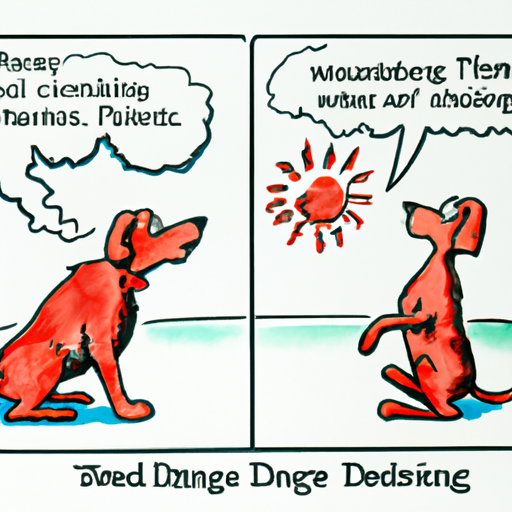As a dedicated and loving pet owner, you’ve probably noticed changes in your dog’s behavior from time to time, especially if you have a female. One of the most significant changes occurs during a dog’s heat cycle, a biological process akin to a human’s menstrual cycle. It’s a natural part of a dog’s life, but it can be confusing, especially if you’re not familiar with the signs.
Table of Contents
- Understanding the Heat Cycle
- Behavioral Changes in Dogs During Heat
- Coping with Canine Heat Behavior
- Frequently Asked Questions
Key Takeaways
- Dogs undergo significant behavioral and physical changes during their heat cycle.
- Understanding these changes can help you provide better care for your pet.
- There are several ways to manage a dog’s behavior during their heat cycle effectively.
Let’s dive into these aspects.
Understanding the Heat Cycle
Female dogs, just like humans, go through a reproductive cycle. This cycle, called estrus or being “in heat,” usually happens twice a year and lasts about two weeks. This is when your dog’s body prepares for potential pregnancy. This comprehensive guide to a dog’s heat cycle provides more detailed information.
- Proestrus: Lasting around nine days, this is when the dog’s body begins to prepare for pregnancy. Physical changes such as a swollen vulva and bloody discharge are common.
- Estrus: Lasting around nine days, this is when the dog is receptive to mating. Discharge lightens in color.
- Diestrus: Lasting around two months, this is a period of rest whether the dog has become pregnant or not.
- Anestrus: The rest period between heat cycles, typically lasting four to five months.
Behavioral Changes in Dogs During Heat
During the heat, you might notice significant behavioral changes in your dog. These changes are often due to hormonal fluctuations and can vary from one dog to another. Here are some common behaviors:
- Increased urination: Dogs in heat often urinate more frequently. This is a way for them to spread their scent and signal their availability to males.
- Marking behavior: Similar to increased urination, marking is another scent-spreading behavior. Dogs in heat might mark their territory more frequently.
- Nervous behavior or agitation: Hormonal changes can lead to restlessness or nervous behavior. Your dog might appear more anxious or agitated than usual.
- Increased attention-seeking: Your dog might become more affectionate or clingy during their heat cycle.
You might also notice physical changes, such as a swollen vulva or bloody discharge. This article on recognizing signs of heat can help you better understand these changes.
Coping with Canine Heat Behavior
As a caregiver, understanding your dog’s behavior during heat is crucial. Here are some suggestions on how to cope:
- Monitor your dog’s behavior: Keep an eye on your dog’s behavior and physical changes. This can help you identify the onset of the heat cycle and manage it effectively.
- Use doggie diapers: These can help manage the discharge and prevent staining on furniture or carpets.
- Keep your dog entertained: Distraction can help manage restlessness or anxiety. Keep your dog entertained with toys or games.
- Separate males and females: If you have both male and female dogs at home, it might be best to keep them separated during the heat cycle to prevent unwanted pregnancies.
For more tips on managing a dog in heat, check out this guide on caring for a dog in heat.
Frequently Asked Questions
1. How often do dogs go into heat?
Most dogs go into heat twice a year, but this can vary depending on the dog’s breed and age.
2. How long does a dog’s heat cycle last?
A dog’s heat cycle typically lasts around two weeks.
3. Can a dog’s behavior change after going into heat?
Yes, dogs often display different behaviors during their heat cycle due to hormonal changes.
4. How can I manage my dog’s behavior during heat?
Monitoring your dog’s behavior, using doggie diapers, keeping your dog entertained, and separating males and females can help manage a dog’s behavior during heat.
Understanding your dog’s heat cycle can help you provide better care and support during this time. By being aware of the changes that can occur, you can help your pet navigate this natural biological process with ease. For more information about dog health and behavior, visit One Top Dog.



